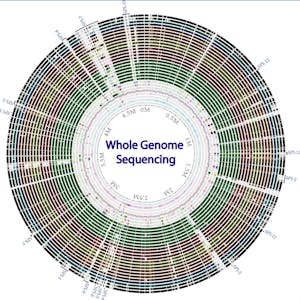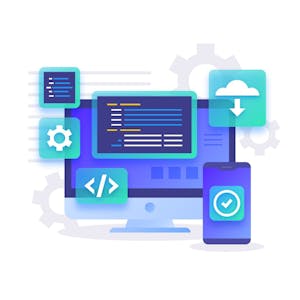Whole genome sequencing of bacterial genomes - tools and applications
About this Course
This course will cover the topic of Whole genome sequencing (WGS) of bacterial genomes which is becoming more and more relevant for the medical sector. WGS technology and applications are high on international political agenda, as the classical methods are being replaced by WGS technology and therefore bioinformatic tools are extremely important for allowing the people working in this sector to be able to analyze the data and obtain results that can be interpreted and used for different purposes. The course will give the learners a basis to understand and be acquainted with WGS applications in surveillance of bacteria including species identification, typing and characterization of antimicrobial resistance and virulence traits as well as plasmid characterization. It will also give the opportunity to learners to learn about online tools and what they can be used for through demonstrations on how to use some of these tools and exercises to be solved by learners with use of freely available WGS analysis tools . By the end of this course you should be able to: 1. Describe the general Principles in typing of Bacteria 2. Give examples of the applications of Whole Genome Sequencing to Surveillance of bacterial pathogens and antimicrobial resistance 3. Apply genomic tools for sub-typing and surveillance 4. Define the concept of Next-Generation Sequencing and describe the sequencing data from NGS 5. Describe how to do de novo assembly from raw reads to contigs 6. Enumerate the methods behind the tools for species identification, MLST typing and resistance gene detection 7. Apply the tools for species identification, MLST typing and resistance gene detection in real cases of other bacterial and pathogen genomes. 8. Describe the methods behind the tools for Salmonella and E.coli typing, plasmid replicon detection and plasmid typing 9. Utilize the tools for Salmonella and E.coli typing, plasmid replicon detection and plasmid typing in real cases of other bacterial and pathogen genomes. 10. Explain the concept and be able to use the integrated bacterial analysis pipeline for batch analysis and typing of genomic data 11. Demonstrate how to construct phylogenetic tree based on SNPs 12. Apply the phylogenetic tool to construct phylogenetic trees and explain the relatedness of bacterial or pathogen strains 13. Describe how to create your own sequence database 14. Utilize the MyDbFinder tool to detect genetic markers of interest from whole genome sequencingCreated by: Technical University of Denmark (DTU)

Related Online Courses
This course is designed for Beginners with some background in basic web development experience, HTML, Javascript, and CSS.\\n\\nPersonally, the learner who is considering being a web developer... more
The Arabic specialization is intended for learners with little to no prior knowledge of Arabic. The specialization focuses on providing learners with a well-rounded understanding of the... more
Welcome to this specialization about privacy and standardisation,\\n\\nWe are thrilled to see that you are interested and will provide you with a comprehensive study of the intriguiging subject of... more
Embark on a comprehensive Node.js development journey with this course. Starting with the fundamentals, you will establish a solid foundation by mastering Node.js installation and utilizing Visual... more
Using the pay statement as our roadmap, this course covers the basics of payroll that everyone who receives a paycheck should know. Starting with your classification as an employee, you\'ll learn... more








